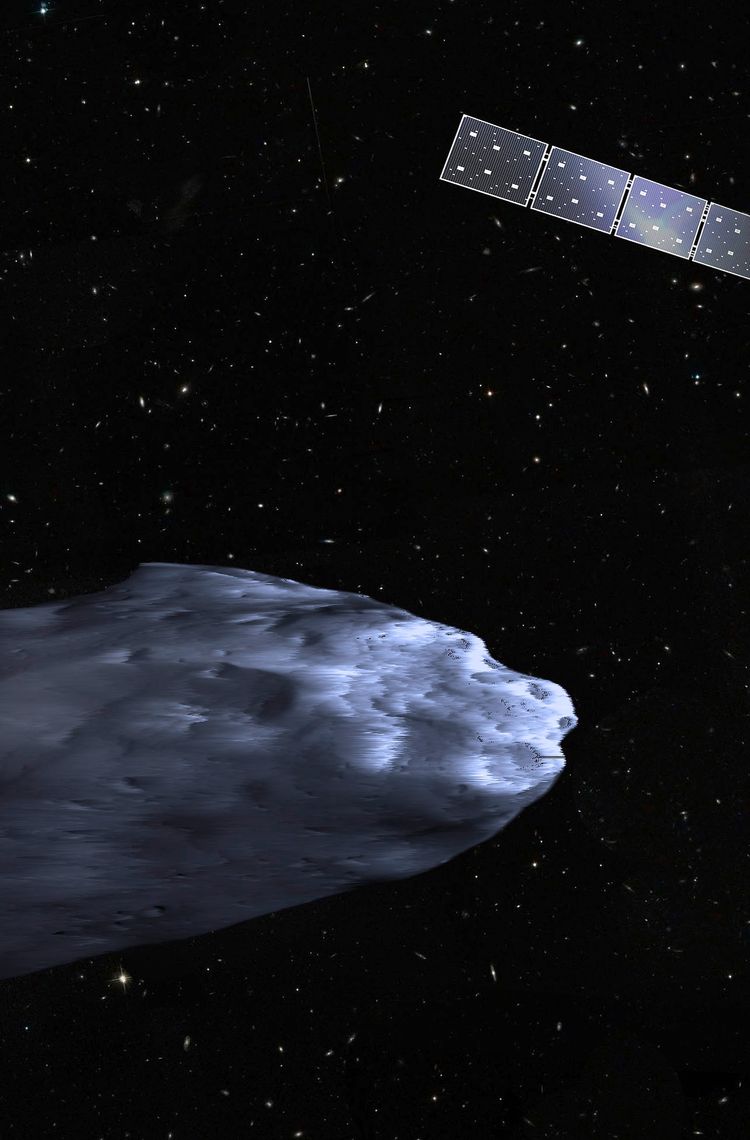Summary
- - Spacecraft launched in 2004 - Mission extended to September 2016 - Mission goal to unlock the mysteries of comets - Airbus Defence and Space led the industrial team that built Rosetta
The European Space Agency (ESA) has extended its Rosetta mission by nine months to 30 September 2016, when it perform a controlled descent down to the surface of comet 67P/Churyumov-Gerasimenko.
Rosetta, built by Airbus Defence and Space-led industrial team, was launched in 2004. Ten years later and after a journey of six billion kilometres, it reached comet 67P.
The small lander Philae lost power just 60 hours after landing in in a canyon in late 2014 where sunlight could not reach its solar panels to generate power. However, the data it collected during its first days included carbon and nitrogen-rich compounds, suggesting that complex processes and the building blocks for life were present in the early solar system.
Rosetta watched the comet’s increasing activity as it made its closest approach to the Sun on 13 August 2015. Continuing the study in the year following perihelion is giving scientists a fuller picture of how the comet’s activity waxes and wanes along its 6.5-year long orbit.
“By comparing detailed ‘before and after’ data, we will have a much better understanding of how comets evolve during their lifetimes,” says Matt Taylor, Rosetta’s Project Scientist.
During the extended mission, the team will carry out some new and potentially riskier investigations, including flights across the night-side of the comet to observe the plasma, dust, and gas interactions in this region as well as to collect dust samples ejected close to the nucleus.
As the comet 67P moves away from the inner Solar System towards the orbit of Jupiter, the amount of light falling on Rosetta's solar panels is gradually diminishing. As a consequence, it has less power day by day to run its instruments and sub-systems.
Engineers put the satellite into hibernation mode for 31 months in 2011 on the most distant leg of its journey away from the Sun. But with Rosetta’s much-reduced fuel load, it makes little sense to place it into hibernation again.
The landing, on the other hand, offers the opportunity to gather unique data at unprecedentedly close distances.
In August the operations team will make the first trajectory changes to put the spacecraft in a series of elliptical orbits where the closest approach gets nearer and nearer to the comet surface. “Planning this phase is in fact far more complex than it was for Philae’s landing,” says Sylvain Lodiot, ESA Rosetta spacecraft operations manager. “The last six weeks will be particularly challenging as we fly eccentric orbits around the comet – in many ways this will be even riskier than the final descent itself.
The final few months of the mission promise to be the most exciting as Rosetta gets close enough to make unique and dangerous measurements, including very-high-resolution imaging, increasing the science return of this inspiring mission.
'Source: ESA website'
